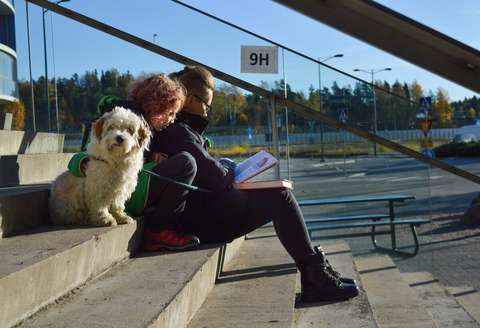How urban planner uses information gathered from residents?

Espoo wants residents’ experience-based information to be used as a basis for planning areas. The data collected in the My Espoo on the Map survey can be used in a variety of ways in urban planning when the data and analyses are easily accessible to planners.
Thousands of Espoo residents took the time and effort to answer the My Espoo on the Map survey, and we received much more information to support urban planning than could possibly be produced by a survey or public hearing on a single plan project. The data will be carefully analysed and also reported in scientific publications. In addition to this, the results will also be shared with planners, so that the experience-based information can influence planning decisions and more people in Espoo can have their voices heard.
The planning process uses a wide range of information on matters such as population and jobs, the values of the natural and built environments, and mobility. Conventional initial data is now being supplemented by information based on the experience of residents. All this information and different perspectives are brought together in the planning to bring about a positive change in the urban environment.
Geographic information highlights the places important to the people of Espoo
The survey data has been entered into a geographic information system, from which experts retrieve initial data for planning. This allows the survey data to be included in the initial planning data in the same way as infrastructure or nature data, for example.
The data is presented in the geographic information system in such a way that individual respondents cannot be identified. However, the location markings give an overall picture of which places are important to the people of Espoo in their everyday lives and leisure time, and how people get to them.
This means e.g. that local recreational areas that are important to the people of Espoo are identified in the planning process or that suitable sites for complementary construction can be mapped out. The comfort and safety of the routes that people frequently use can also be improved.
However, the data is only a starting point for more detailed planning and does not directly lead to action. The data will be used for both master planning and local detailed planning, which will be carried out in interaction with residents. The information from the survey will help plan ways to interact and address the right issues in workshops, for example. The aim is to make it clear in the plan documents how the information based on the experience of the residents of Espoo has been utilised in the planning process.
My Espoo on the Map will become an established part of the initial data
In urban planning, it takes several years to plan a site and even longer to build it. The impact of the My Espoo on the Map data on the urban environment will only become apparent over the years. This is another reason why dialogue with residents in workshops and other events is necessary.
The aim is that the My Espoo on the Map survey will become an established part of the initial data for urban planning and that it can also be updated regularly in the future, for example every council term.
About the author:
Architect Johanna Palomäki is a Planning Manager at the Espoo Urban Planning Department, Master Planning. She is an advocate for influential participation and has done groundbreaking work to reform the master planning process and make the experience-based information of residents available to planners.